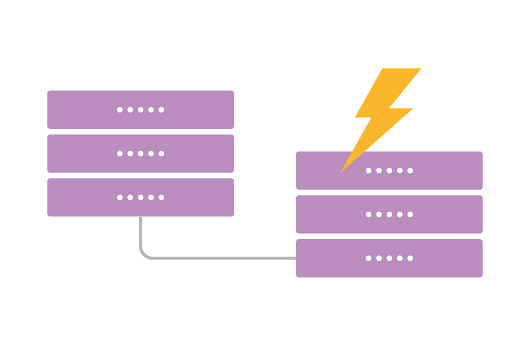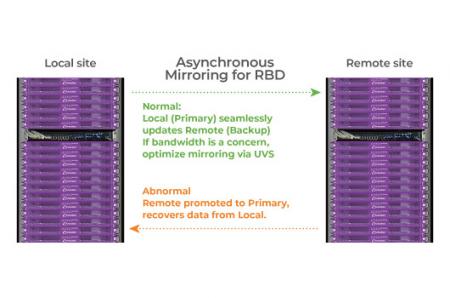
Could Mars 400 ceph storage support disaster recovery?
Mars 400 ceph storage supports the disaster recovery with 2 storage protocols.
1. Block Storage - Asynchronous Mirroring for RBD.
2. Object Storage - RGW Multisite active-active support.
The users can use the UVS manager to configure the disaster recovery for RBD and S3.

Mars 400 Ceph storage can use RGW multi-site active active for different geolocation, provide a high availability storage cluster.
Mars 400 ceph appliance supports active-active multisite installation to make data available on multiple different locations.
The users can use the UVS manager on Mars 400 to execute:
● Create the Rados gateway for multisite - Master.
● Create the Rados gateway for multisite - Secondary.
● Define the zone group with those multisite Rados gateway.
● Get user access key.
● Get user secret key.
● Promote the secondary site as the master site when the master site getting failed.
For the details, welcome to contact the Ambedded team or Ambedded partners to know further.

Use Ceph RBD Async mirroring, the secondary site could backup the main-site data to avoid data lost.
For the block storage, Mars 400 ceph appliance support RBD Asynchronous Mirroring between primary site (A) and secondary site (B).
● If there is change and new on primary site (A), the RBD image and snapshot will be mirrored to the secondary site (B).
● In any case if users want to restore to previous date, he can rollback the image to the specific snapshot.
● If the primary site (A) fails, client server can change its connections to secondary site (B) to continue the service. Mars 400 also can promote the secondary site (B) to the primary site while the original primary site (A) failed.
● When cluster A back to normal, data can be sync to site A for failback.
